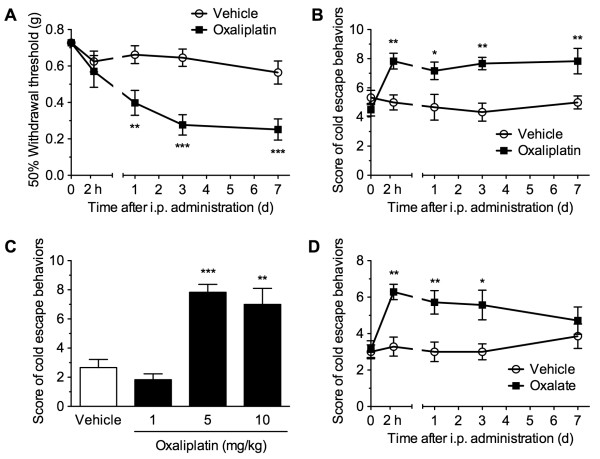Figure 1.
A single administration of oxaliplatin induces acute cold hypersensitivity, but not acute mechanical hypersensitivity. ( A, B) Mice were intraperitoneally administered either vehicle or oxaliplatin (5 mg/kg). At the indicated times, the 50% withdrawal threshold to mechanical stimulation and escape behaviors in response to cold stimulation (5°C) were evaluated in a von Frey filament test ( A, n = 8) and a cold-plate test ( B, n = 6), respectively. Cold escape behaviors were scored depending on a behavioral assessment, with the total score calculated for a period of 60 s. * p < 0.05, ** p < 0.01, *** p < 0.001 compared with vehicle-administered group. ( C) Mice were intraperitoneally administered vehicle or oxaliplatin (1, 5 or 10 mg/kg). Two hours after the administration, the cold escape behaviors were scored in the cold-plate test. n = 6. ** p < 0.01; *** p < 0.001 compared with vehicle-administered group. ( D) Mice were intraperitoneally administered either vehicle or oxalate (1.7 mg/kg). At the indicated times, the cold escape behaviors were scored in the cold-plate test. n = 7. * p < 0.05 compared with vehicle-administered group. Data are presented as the means ± S.E.M. Statistical significance was calculated by one-way ANOVA (C) or two-way repeated measures ANOVA, followed by Bonferroni post-hoc test.

